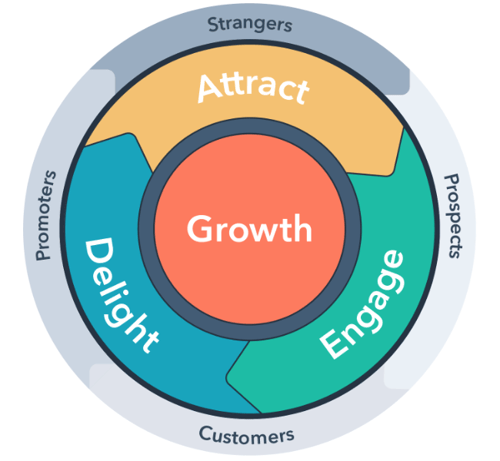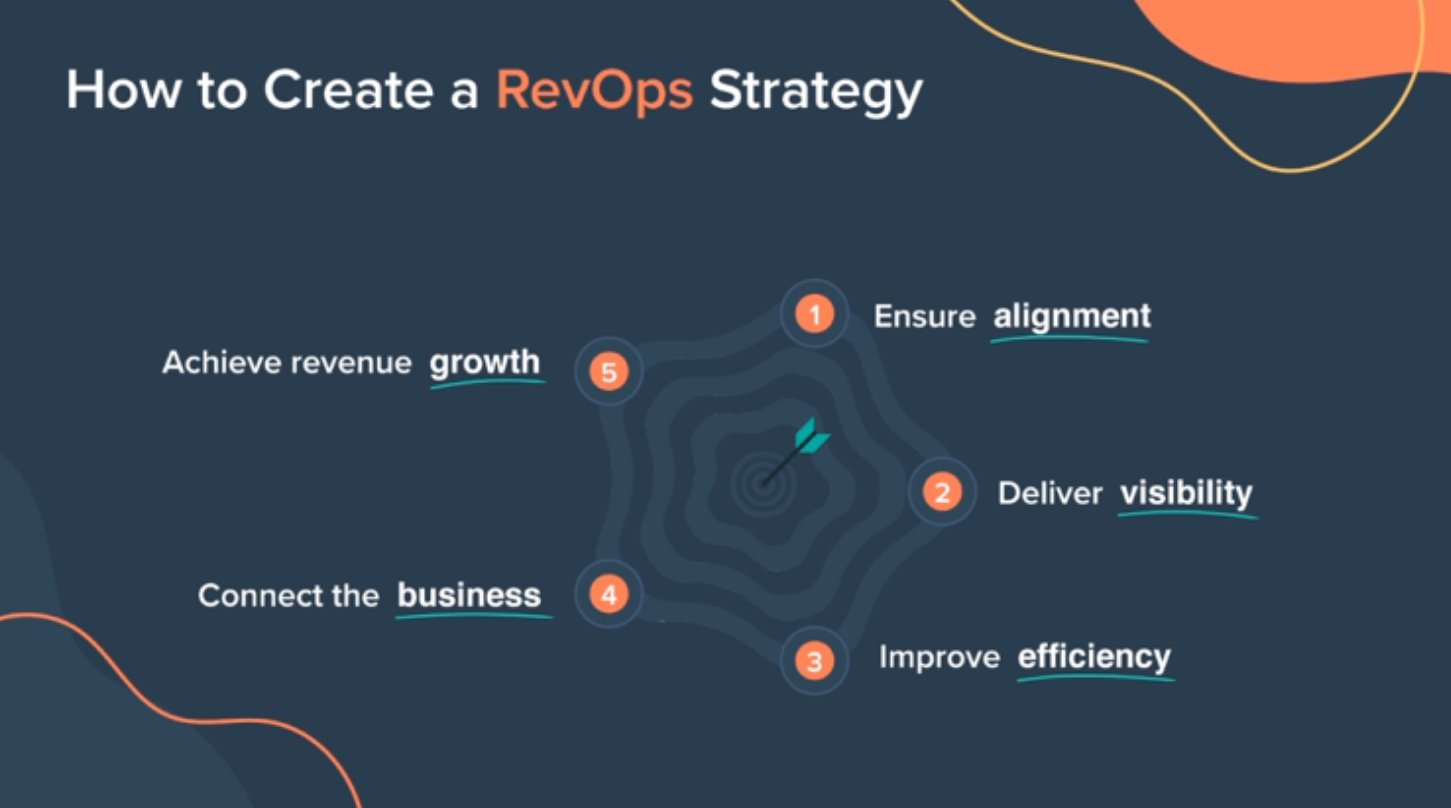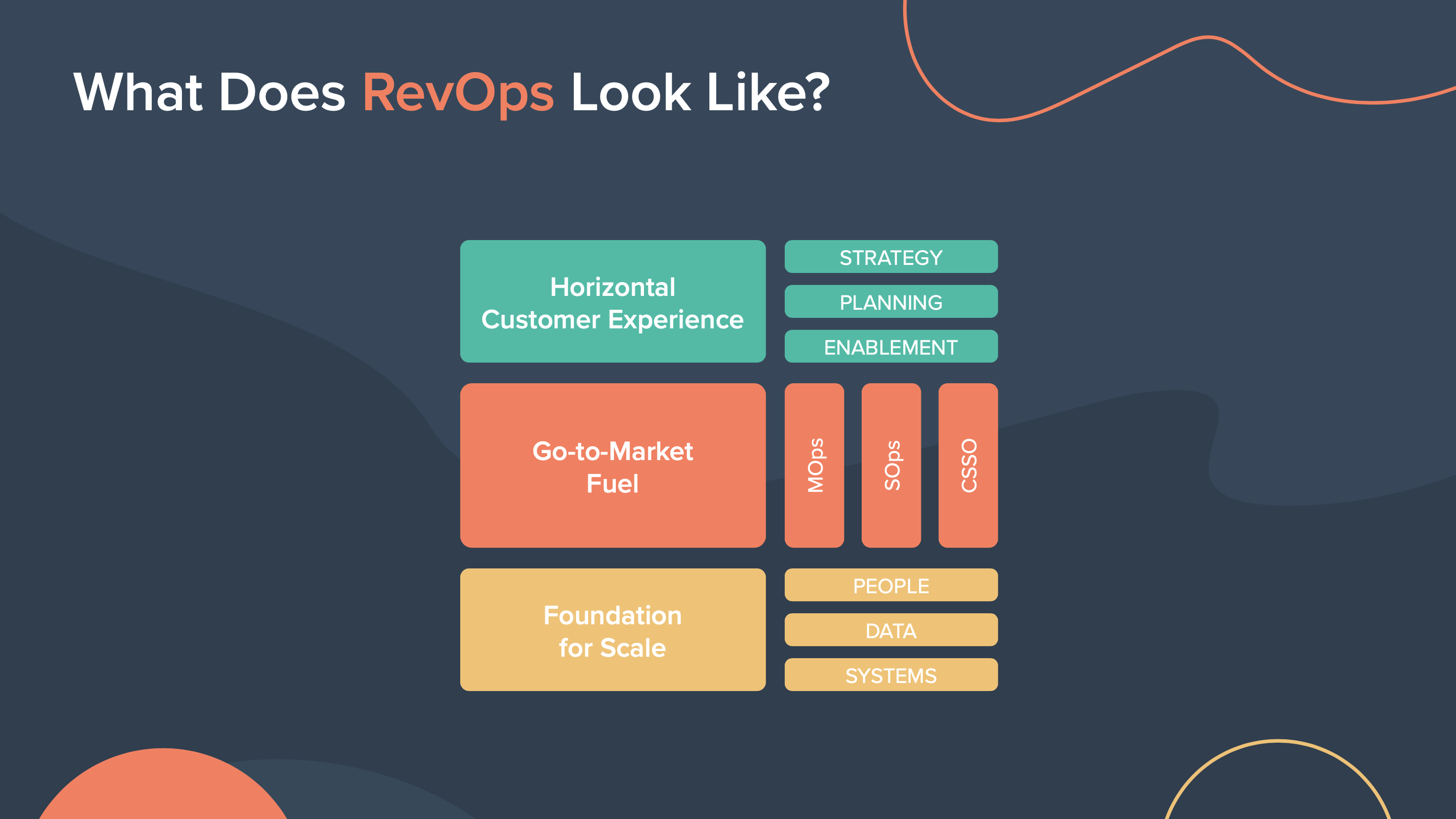The Ultimate Guide to Account-Based Marketing (ABM)
The holy grail for B2B sales and marketing is finding the right accounts that drive revenue. ABM is the go-to strategy that delivers you the results.
- Blog

The era of RevOps has arrived. RevOps makes revenue everyone's responsibility, aligning all teams around and creating predictable business growth.
“I’m a precision instrument of speed and aerodynamics.”
Auto enthusiasts know where this quote comes from — Lightning Mcqueen from the Pixar movie, Cars.
Anyone who's driven a car knows that after a while, every car needs to be sent into the workshop for alignment. Alignment is crucial because without it — your car might cause trouble.
Tyres get unevenly worn out, leading to suspension issues, which could also lead to steering issues. One thing leads to another and boom — your fuel light is on.

A business should also be viewed as a precision instrument.
Poor alignment is perhaps tolerable when in the start up phase. But when a business tries to scale up, lack of alignment creates friction which makes scaling near impossible.
If you want to fire up your revenue engines and run your business like a finely tuned precision machine, then you'll need revenue operations (RevOps).
Here's RevOps in a nutshell — a strategy to create alignment to grow revenue.
First, let's consider how a business could grow or increase revenue.
Here are 4 ways a business can grow revenue:
Increase the number of customers
Increase the average transaction (deal) size
Increase the frequency of transactions per customer
Increase prices
Sounds simple, but it requires a significant effort from each team member to make it happen. Marketing attracts potential customers, sales own the upsell and cross-sell, and customer service teams help retain customers and manage renewals.
RevOps become a significant strategy to impact revenue because it aligns all customer-facing teams, making them efficient and accountable for revenue.
Don't just take our word for it. Check out HubSpot's definition:
Within a company, Revenue Operations (also known as RevOps) is responsible for aligning the operations functions supporting the sales, marketing, and customer service organizations.
Another definition from Forbes suggests that it is about an end-to-end process:
RevOps recognizes that revenue isn’t just an outcome but rather a full process that involves the strategic convergence of sales, marketing and customer success (CS). It’s the end-to-end process of driving revenue, from the moment a prospect considers a purchase (marketing) to when you close the deal (sales) to their renewal and upsell (CS).
RevOps is removing teams from their silos to own the entire process of driving revenue.
We're big believers in the inbound methodology pioneered by HubSpot.
The inbound methodology is the method of growing your organisation by building meaningful, lasting relationships with consumers, prospects, and customers
The key here is customer delight.
Let's take a look at what customer delight means. Here's a definition from HubSpot:
Customer delight is the process of exceeding a customer's expectations to create a positive experience with your product or brand. Delight is about providing a remarkable experience to users through focusing on their needs, interests, and wishes.
Who's responsible for customer delight? In any truly successful inbound organisation — customer delight is everyone's responsibility.
If we look at the HubSpot flywheel, creating customer delight doesn't just begin when you sign a customer. Delight happens at all customer touchpoints.

You can't deliver delight if your teams are siloed, lack standardised processes and don't have a single source of truth for customer data.
RevOps aligns all teams around the customer and makes revenue everyone's responsibility. You can break down silos, leading to a unified, aligned and engaged team around what really matters to the business — growing revenue.
Now that brings us to an important question.
Let's assume for a moment that your business is doing great.
Marketing is raining down lots of leads, sales are rocking it with the number of deals created and high close rates and your customer success teams are smashing it.
What can you do to grow?
We tend to think about growth in linear terms — adding resources such as capital, people, or technology as revenue grows.
By contrast, scaling is when revenue increases without a substantial increase in resources. Because of the costs associated with growing a business, scaling is a more desirable strategy where you significantly grow a business without increasing its costs.
-png.png)
Achieving scale requires repeatable and predictable systems. But the reality is that many internal systems and processes aren't designed to scale.
Here are some problems businesses face when trying to scale:
Teams are siloed with distinct priorities
Teams become reactive to problems
Disconnected customer experiences
The operations process is not scalable
Lack of visibility over business and data
Scaling a company is the fundamental reason to start implementing a RevOps strategy.
The world has changed, so businesses have to change with it.
Some of the big changes in B2B and marketing actually offer opportunities that RevOps can help address. Let's take a look at the big three.
Buyers are now in the driver's seat when making buying decisions.
Take a look at this diagram below describing the B2B buying journey.

Source: Gartner
According to Gartner:
B2B buying doesn’t play out in any kind of predictable, linear order. Instead, customers engage in what one might call “looping” across a typical B2B purchase, revisiting each of those six buying jobs at least once.
Buying jobs doesn’t happen sequentially, but more or less simultaneously.
Is your business ready to tackle this buyer's journey? That might be a good indicator that RevOps can help create efficiencies to allow scale.
Pro Tip: RevOps can help align all touchpoints for the buyers offering a more seamless experience.
As the business grows, it tends to adopt tools to allow it to operate more efficiently and effectively. These tools help the business collect data and perform business operations.
Here's how HubSpot defines a tech stack:
A technology stack, or tech stack, is the collection of tools, platforms, apps, and pieces of software that a company uses to build its products, carry out its business operations, and monitor its performance metrics.
Alignment around tool usage is critical to enable scale. You'll need a system to collect data and insight, keep teams aligned and give you visibility over how the business is performing.
The biggest hurdle to this is tech stacks that don't talk to each other, customer data spread around multiple platforms and no single source of truth. Too many tools often lead to friction where lack of adoption, lack of training and lack of enablement happen among teams.
Sometimes, you don't know what's working. There's a lack of visibility over the business. You don't have enough data at hand to address issues like customer churn or ROI for marketing.
Pro Tip: RevOps unifies data across the business to allow teams to achieve their goals and to gain insight into how the business is performing.
As the business evolves and grows, it tends to become more complex — more people, processes, and problems.
There's the tendency to become entrenched in processes that no longer work because "that's how it's always been done." Businesses may evolve with the market, but processes are not updated regularly.
As a result, operations are usually reactive to problems. They only jump in when something is broken. It's hard to get out of that reactive mode and be proactive instead.
Pro Tip: Invest in RevOps early with the intention of being proactive at addressing scaling issues.
These challenges provide opportunities that a well-crafted RevOps strategy can help address, allowing the business to remain competitive and enable scale.
You're now convinced of the impact that RevOps can play to ensure your business grows and achieve scale. What does it look like?
There are 5 stages to implementing RevOps:
Each stage plays a crucial role in achieving revenue growth.

According to HubSpot, there are 6 basic ingredients for RevOps:
Strategy and planning
Performance and metrics
Insights and analytics
Operational rigour
Enablement and optimisation
Technology and systems
This is the HubSpot RevOps strategy visualised across 3 pillars:

1. Foundation for scale
In order to scale, you need a strong foundation consisting of a single data model, a single system, and a unified people strategy. Having a foundation that's crafted, NOT cobbled, will enable you to scale for years to come.
2. Go-to-market fuel
Ops are usually the last hires to a team to tame the chaos. Instead of seeing Ops as fixes, use them as fuel to power your internal teams.
3. Horizontal customer experience
Instead of being siloed and vertical, you want to have horizontal alignment across strategy, planning, and enablement teams. By aligning all three, you can move faster, more efficiently, and solve for the customer.
To leverage RevOps in your organisation, we recommended starting with these:
Step 1: Audit
Perform an audit across all these areas: tech stack audit, behaviour audit, and customer journey audit. The goal is to find areas of friction and areas of force that will inform your priorities.
2. Align
Define and align teams around lifecycle definitions across the business. Create visibility so everyone gets a full-funnel view of the revenue pipeline. Ensuring teams can have visibility over the health of the business creates alignment about what to focus on.
3. Automate
Build or restructure operations to capture revenue potential. Create automation that can remove some manual work. Reoptimise processes to reduce friction.
4. Activate
Maintain consistency with your RevOps strategy, and optimise existing processes. Activate an execution plan for 12-months and ensure continued adoption and optimisation.
If you're interested to grow and scale your business, RevOps is the way to go.
Start chalking some quick wins on the board and implement some of the strategies we've listed in this blog. If anything, start consolidating all your data through one source of truth like the HubSpot CRM.
Here at Content Chemistry, we can help you with building a RevOps strategy for your business by applying our expertise in inbound marketing along with HubSpot to deliver a powerful combination that can transform your business.
Learn more about B2B marketing and HubSpot.
Samuel is a Digital Marketing Specialist with Content Chemistry, a digital marketing agency and a HubSpot Solutions Partner and Google Partner based in Sydney. He is enthusiastic about good coffee, Malaysian food and watching movies.